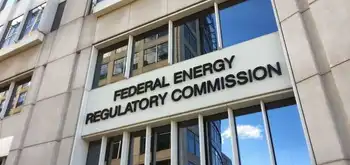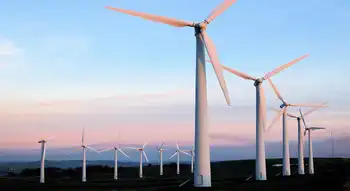EU green plan to “fund dirty coal”
By The Independent
NFPA 70e Training - Arc Flash
Our customized live online or in‑person group training can be delivered to your staff at your location.

- Live Online
- 6 hours Instructor-led
- Group Training Available
Billions of pounds in revenues from the EUs Emissions Trading Scheme ETS – under which power plants have to buy permits to pollute so they have an incentive to drive their emissions down – may find their way into state aid for new coalfired power station construction across the continent.
The bizarre situation of a climate policy pulling in two directions at once arises from concessions made to new and poorer EU member states such as Poland, when the EU was drawing up its current 202020climate change regime, seeking to cut emissions by 20 per cent, and secure 20 per cent of energy from renewable sources, by 2020.
With more than 90 per cent of its energy coming from coalfired electricity, Poland feared it would find the ETS especially burdensome, so the EU agreed that some of the trading schemes revenues could be used as state aid for construction in the energy generation sector.
But rather than applying the rule to Poland in isolation, it was decided that it would apply to every country to ensure a level playing field across the EU. At the moment not all permits are sold – some are given away. Britain currently sells about 7 per cent of its carbon permits, for which it receives just over £50 million annually. But after 2013, 100 per cent of permits will be sold, and the revenues generated across Europe will be enormous, with Britain alone set to raise £40 billion by 2020. Sales of pollution permits will raise tens of billions of pounds between now and 2020 for almost every country in Europe.
The unpublished guidelines for how this mountain of cash may be used in state aid for power station construction have been seen by The Independent. They say the funds could be used to provide up to 15 per cent of the costs of highlyefficient CCSready power plants. But environmental campaigners are critical. CCSready means a power station ready to be fitted with carbon capture and storage, the new technology which, some time after 2020, it is hoped, will extract the CO2 from a plants waste gases and store it under the sea bed. CCS may offer real hope for bringing emissions down, but CCSready can merely mean that a power station has an adjacent site on which a CCS plant could be built.
Highly efficient is a similarly relative term. Under current EU guidelines, values could be used for a coal plant which is only 44 per cent efficient – that is, it loses 56 per cent of the energy it produces in transmission.
Green campaigners say this means there could be massive government subsidies across the continent for building what are in effect oldfashioned dirty coal power stations – the sort that the EUs climate policy is supposed to be phasing out. There are currently 68 new coal plants in the planning stage in the EU, the highest number of which are in Germany.
What these documents show is that billions of pounds raised through a scheme that was meant to help reduce pollution could be handed to massive German energy companies to actually increase pollution by helping them to build the most polluting power stations that exist, said Joss Garman, energy campaigner for Greenpeace.
Its exactly like taking money from Weight Watchers and handing it to McDonalds to run advertising campaigns for Big Macs in schools. Its utterly perverse and it requires Gordon Brown to step in and stop this madness.
A typical coalfired power station might cost £2 billion to build – so a 15 per cent subsidy could amount to a £300 million state handout, for burning more coal.
Emissions trading:
• The European Unions Emissions Trading Scheme ETS is the principal instrument by which climatechanging carbon emissions will be driven down across the EU.
• Emissions trading is a way of offering a financial carrot to polluting companies to persuade them to clean up their act, at the same time as threatening them with a financial stick. Heavy plants are allocated permits to emit a certain amount of carbon dioxide in the course of their operations, one permit being equivalent to a tonne of CO2.
• Once they reach the end of their allocation, they have to buy more permits, which in theory ought to be very expensive. But if they cut their emissions to below their limit and have permits left over, they can sell them on the carbon market to other companies that may be emitting too much.











